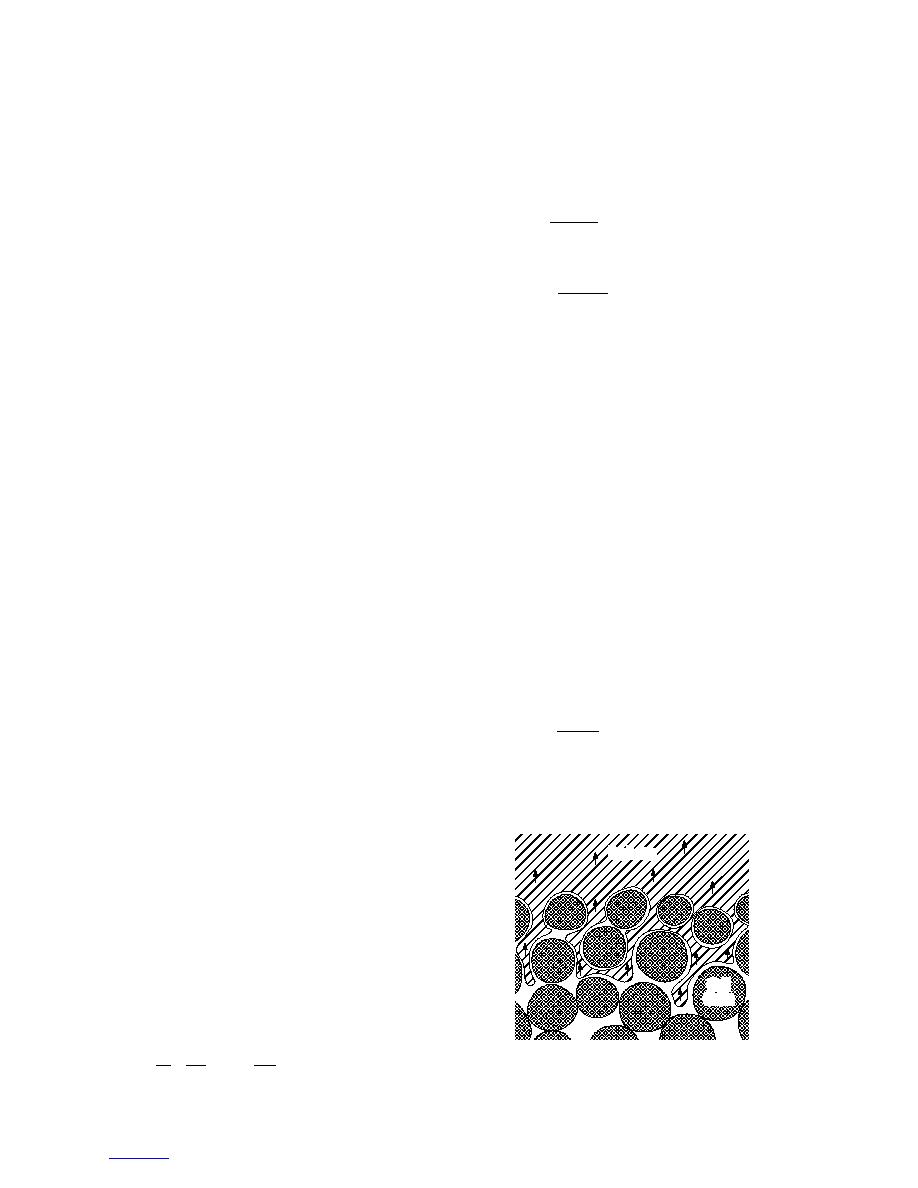
where ρi and ρw are the densities of ice and water,
Note that the osmotic pressure includes the effects
of the diffuse double layer associated with the surface
respectively (recall that Pw refers to total soil water
potential). He defined a variable, φ, as the difference
of soil particles (i.e., adsorbed water) through the pres-
sure term, P (eq 54). Equation 61 was referred to later
between the ice pressure and the soil water potential
by Miller (1978) as the Clapeyron equation; but it is
divided by the interfacial tension
not the Clapeyron equation one usually finds in Physi-
Pi - Pw
φ=-
cal Chemistry texts (i.e., eq 38).
(63a)
Ψiw
Equations 59 and 61 reveal that equilibrium is a func-
tion of pore size (through the Ar/ V term), hydrostatic
or, for air and water
pressure of the soil water, osmotic pressure (i.e., pres-
Pa - Pw
φa = -
ence of solutes and the chemical properties of soil particle
(63b)
Ψaw
surfaces), and temperature. Changes in any of these vari-
ables result either in change of location of freezing front
where subscript a refers to air. Equation 63a is an
or rate of frost heave. For example, if P, Pi, and r are
expression for the mean curvature of the ice/water inter-
constant throughout a soil body, but there is a spatial dis-
face in soil pores at equilibrium, and eq 63b applies to
tribution of temperature, there will be a gradient in Pw,
the air/water interface. When there are no ice lenses in
causing a steady-state flow of water through the system.
a frozen soil, pore ice and pore water contents depend
on φ:
This is a more complete formulation of the equilib-
rium between ice and water in soils than Everett's
ϑw(φ) + ϑi(φ) = η
(64)
(1961). This is because the effects of solutes and the
where ϑw refers to volumetric pore water content (note
chemical properties of soil particle surfaces on the pore
change in notation), ϑi to volumetric pore ice content,
water are accounted for through the use of osmotic pres-
and η is the total porosity.
sure and the effects of the depressed freezing tempera-
ture are also accounted for. Thus, the equilibrium pres-
Miller noted that the pore pressure, u, has both ice
sure difference that can be sustained between pore ice
and water components. Thus, he borrowed an expres-
and pore water, as indicated in eq 61, is much greater
sion from Bishop and Blight (1963) for the distribution
than that indicated in eq 47.
of pore pressure between the air and water phases and
applied it to ice and water:
Miller
u = χ(φ)Pw + [1 χ(φ)]Pi.
Miller (1978) utilized the concepts described in Loch
(65)
(1978) and developed a soil freezing model--predict-
Miller approximates χ (φ), known as the stress parti-
ing frost heave as a function of time, temperatures, and
pressures. Miller applied concepts developed for treat-
tion function, as
ment of soil drying to model freezing of a saturated,
ϑ w (φ)
noncolloidal soil. He restricted his modeling efforts to
χ(φ) ≈
(66)
.
η
noncolloidal soil, so that the deformations of the soil
ice body are due to the formation of ice lenses, and not
Using similitude between soil freezing and soil drying,
compression or expansion of the soil skeleton. This
ϑw(φ) = ϑ w (φa)
model, called the rigid ice model, includes a rigid, con-
(67)
tinuous body of ice that comes in contact with continu-
ous pore water in a zone called the frozen fringe (Fig.
6). The frozen fringe is the zone below the deepest ice
Ice Lens
lens where ice has penetrated the narrowest parts of
larger pores between soil particles. This is similar to
the capillary fringe where air has penetrated the larger
pores in a drying soil. Miller (1978) also defined con-
ditions under which an ice lens will begin to form, and
extended beyond development of the thermodynamic
equilibrium relations in freezing porous materials
Soil
(which he utilized) to the transport of mass and heat
Grain
through unfrozen and partially frozen soil.
Miller used eq 61 in the form
∆T
Pi Pw
-
= - Lf
(62)
Figure 6. Frozen fringe with ice lens
ρi ρw
To
above. (After O'Neill and Miller 1985.)
12





 Previous Page
Previous Page
